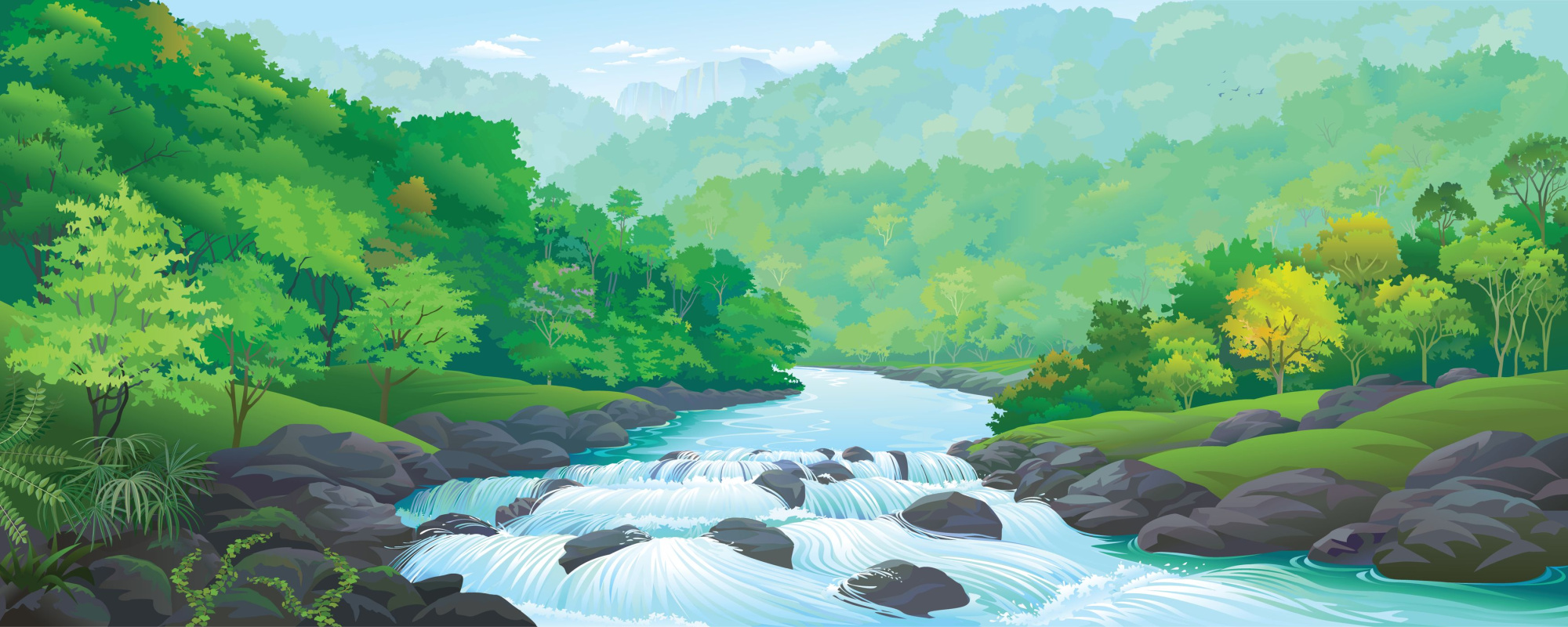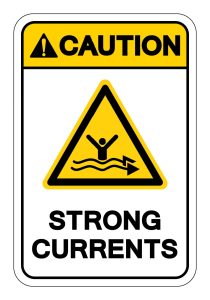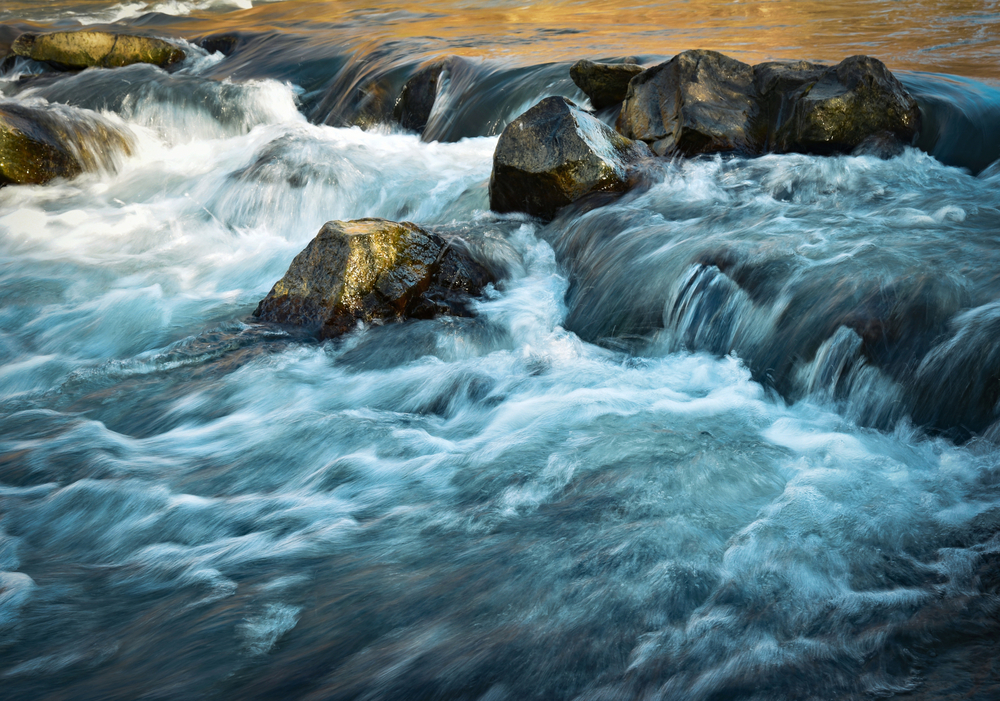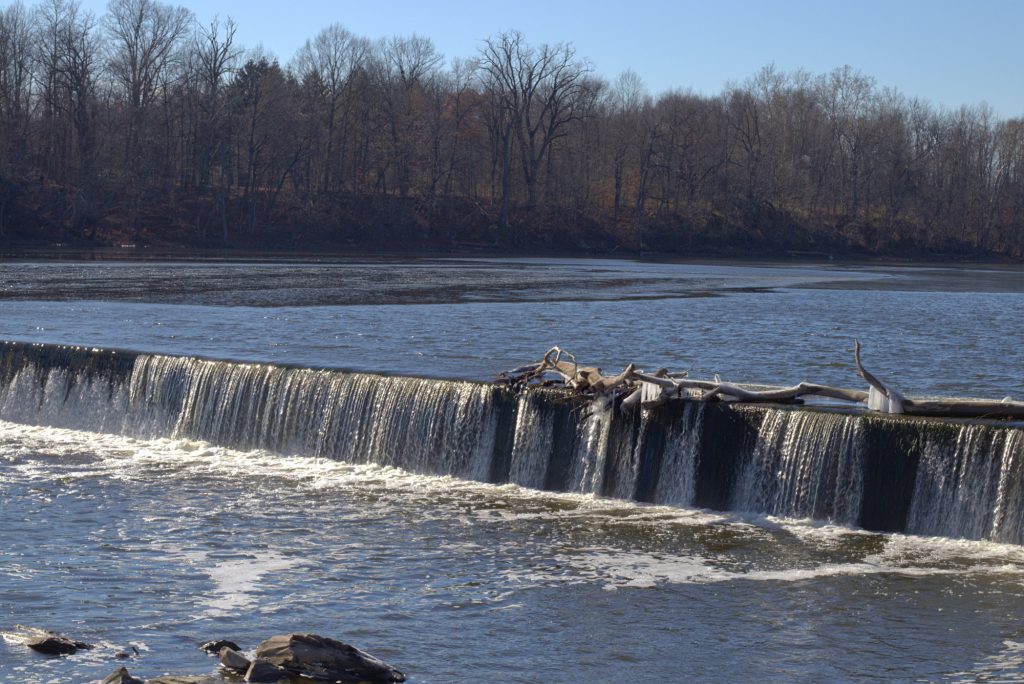
Rivers and streams can be a refreshing way to cool off in the summer. Know how to protect yourself.
Whether you’re swimming, tubing, or just getting your feet wet, it’s important to know how to protect yourself from river and stream hazards.
 Before you go:
Before you go:
- Check to see what water activities are allowed, what is prohibited and why. Flooding, water conditions, contamination, or other hazards may be dangerous or harmful to your health and safety.
- Check water and weather conditions. Summer thunderstorms can happen quickly. Be prepared by checking the weather conditions and knowing what could happen.
- Water quality could be impacted by many things, including algae blooms, chemical spills, or other contaminants. Read signs and heed posted warnings.
- Travel with a buddy. Never swim, wade, or play in/around rivers and streams alone.
- Tell someone where you are going, when you expect to return, and where to call if you don’t.
When you get there:
- Watch out for hazards such as flooding, muddy water, trees, debris, cliffs, or low head dams or bridges. Avoid swift water.
- Keep a close watch on children, even if they are far from the water. Supervision of children is especially important as they can quickly enter the water and get in trouble when your attention is diverted, even if only for a moment.1
- Avoid rock hopping or climbing around waterfalls. Rocks may be slippery, especially when wet.
- If you choose to cross a stream by going through it or over rocks, study the area. Consider where you will land if you fall. Never cross above rapids, falls, or dams.
- Don’t jump off waterfalls or dive into waterfall pools. Unseen objects, such as logs and boulders, may be under the water’s surface.2
- If you fall into fast-moving water, do not try to stand up. The force of the water will push you over and hold you under. Instead, lay on your back with your feet pointing downstream and toes pointing up toward the surface. Always look downstream and be prepared to fend off rocks with your feet. Most drownings result from getting a leg or ankle caught in an underwater rock ledge, between boulders or snagged in tree limbs or other debris.¹
- If you don’t know how to swim, wear a Personal Floatation Device (PFD) that meets U.S. Coast Guard requirements.¹
Common River and Stream Hazards
Unseen Hazards

Rivers and streams may appear calm on the surface, but underneath the water there may be:
- Strong under currents that can pull under even a strong and experienced swimmer.1
- Strainers: underwater trees or branches that can trap you underwater in the current.
- Rapids with narrow gaps between rocks that can trap you underwater.
- A slippery and uneven bottom that can make you lose your footing.
- Unstable riverbanks, especially during and after floods and heavy rain.1
Currents, Rapids, and Rocks
- Currents can be more powerful than they look, even when the water looks calm.
- Current can knock you down and sweep you downstream. Even current in as little as six inches of water can present a hazard.
- Water levels can rise quickly and without notice from heavy rain. A change in water levels can change the location and strength of currents.
- Rapids (or whitewater) occur when river currents bounce off boulders to form frothy waves. Unless you are expertly trained, stay out of rapids.
- Avoid rock hopping or climbing around waterfalls. Rocks may be slippery, especially when wet.
- If you choose to cross a stream by going through it or over rocks, study the area. Consider where you will land if you fall. Never cross above rapids, falls, or dams.

Tubes, Kayaks, and Motorboats
Floats and boats can be a lot of fun. But they can present their own hazards.
- Have a plan - know where you're floating to and how long it should take. Make sure someone knows where you are and where you're going. Have an emergency plan.
- Check river conditions and the weather. Weather can change quickly and cause lightening or a rise in water levels.
- Think safety - wear a Personal Floatation Device (PFD) and a helmet, wear river shoes to protect your feet from rocks and other sharp objects, and stay in sight of your group. Wear sunscreen and a hat.
- Watch out!
- Watch out for anglers and their fishing hooks and lines.
- Watch out for motor boats or other motorized watercraft. If they can't see you they might hit you - be proactive in avoiding motorized watercraft and wear bright gear so they can see you.
- Watch out for unseen river hazards and dams.
- Don't boat or float outside your skill level. Know the river, rapids, and your skill level.

Low Head Dams
- Low head dams are extremely dangerous. Stay away from them at all times.
- Dams are difficult to spot from upstream and often are not marked by signs or buoys.³
- Dam hydraulics are unpredictable.
- Often dams are constructed in a way that prevent escape. Even areas immediately downstream are dangerous as the frothing water is flowing upstream towards the dam hydraulic. If the dam doesn’t trap you, the water current will.
- Rescuing trapped individuals is dangerous and often unsuccessful.³
- If floating down a river, scout ahead to know the dangers. If you see a dam, exit the river and go around it. Reenter the river farther downstream of the dam.
- Visit the Department of Wildlife Resource's Low Head Dams website for more information.

 If you have a water-related emergency:
If you have a water-related emergency:
- Call 9-1-1 for help. Time is of the essence. Be ready to tell the 9-1-1 operator the circumstances of your emergency (e.g. where you are located, the number of people impacted, etc.).
- DO NOT attempt a rescue by jumping into the water. Many people have drowned while trying to save someone. Only a person who is trained in water rescue should enter the water to rescue someone in trouble.1
Resources
1National Park Service. River and Stream Safety. https://www.nps.gov/articles/river-and-stream-safety.htm
2U.S. Department of Agriculture Forest Service. Water Safety. https://www.fs.usda.gov/visit/know-before-you-go/water-safety.
³Virginia Department of Wildlife Resources. Low Head Dams. https://dwr.virginia.gov/boating/education/lowhead-dams/
American Red Cross: Swimming Safely in Lakes, Rivers, and Streams. https://www.redcross.org/get-help/how-to-prepare-for-emergencies/types-of-emergencies/water-safety/lake-river-safety.html
Last Updated: August 9, 2024

